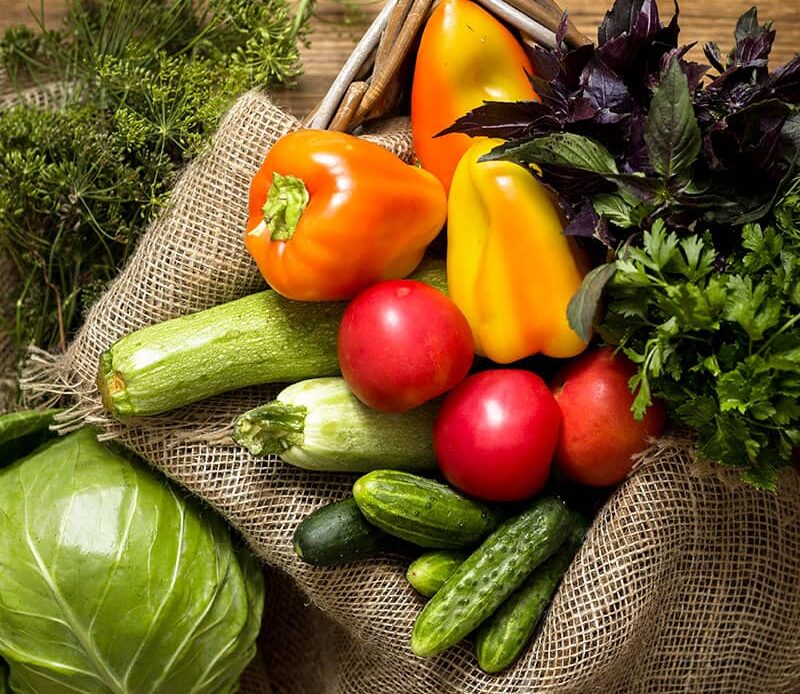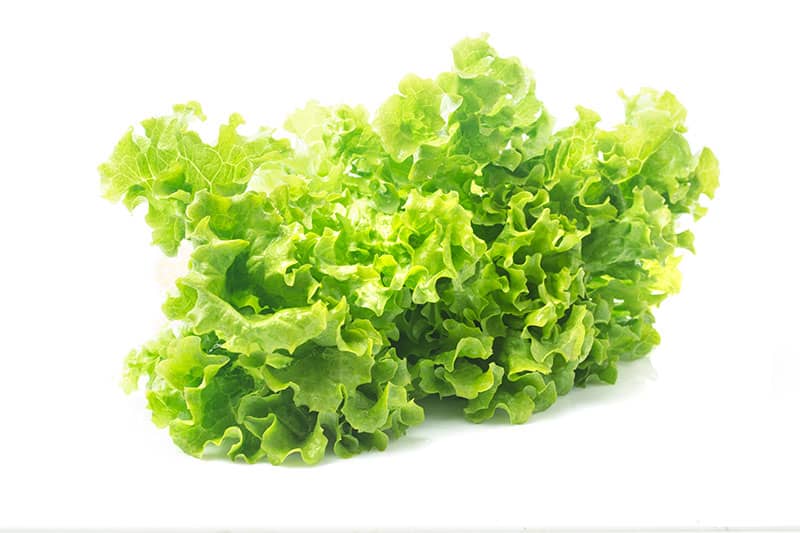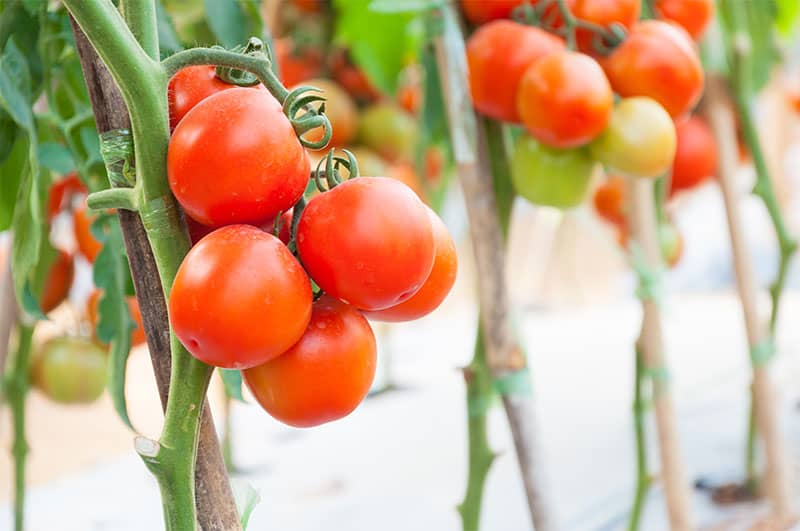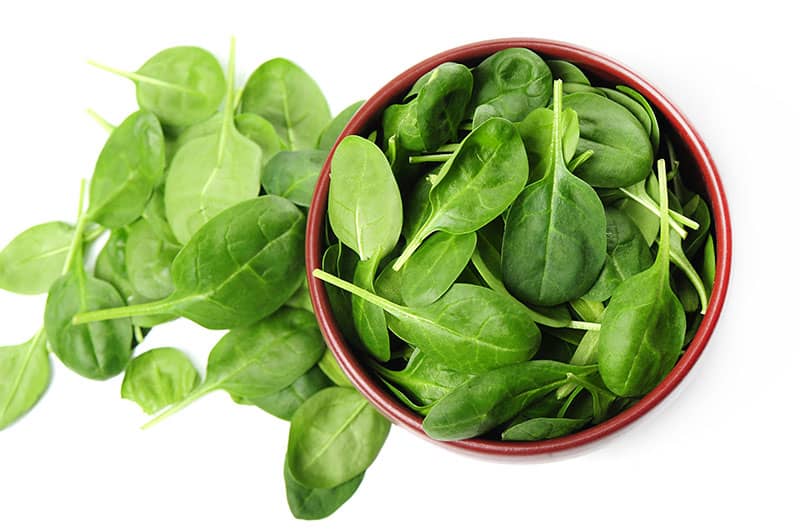
These Best 10 Hydroponic Vegetables presents only the most popular and easy to grow vegetables, but you can grow almost any plant or vegetable hydroponically.
What Are The Best 10 Hydroponic Vegetables?
In the last few years, hydroponic gardening has become increasingly popular. The increased demand leads for more complexes and improved hydroponic systems. That also leads to decrease the price for basic hydroponic systems which today are inexpensive and easily maintained.
Hydroponics is a method of growing plants in nutrient-rich water rather than soil. This method can be used to grow a wide range of herbs, vegetables, and other plants. This method is also called soil-free growing method and some plants are better suited for this than others methods.
Producing higher yields, denser vegetation, faster growth, and more flavorful crops from plants grown hydroponically is because they can direct all their energy into. Using hydroponics you can grow many popular vegetables. Below are the best 10 hydroponic vegetables plants that are among the easiest plants to grow hydroponically using hydroponic systems:
Lettuce

Lettuce is considered as the best vegetables for hydroponic systems and one of the top choices among hydroponic gardeners. It may be one of the choices. Lettuce has an increased demand especially in the last decade with more and more people going towards healthy eating. This vegetable also it requires little space, little efforts and you can harvest leaves through the whole growing process.
There is no double that you can find this vegetable leading any place about easiest vegetables to grow and it has our top position for the Best 10 Hydroponic Vegetables you can grow. In just few weeks you can enjoy your first crop. Lettuce contains phyto-nutrients which result in a health promoting and disease preventing properties. It is a very low calorie veggie that is rich in vitamins A, C and K and contains minerals such as calcium magnesium, iron, and potassium.
Lettuce enjoys cool temperatures (50-70°F, 10-21°C) with high nitrogen levels. It is recommended to plant them near the borders of your planter, about four inches apart, so that their heads hang over them.
Easy to care, lettuce heads grow rapidly in hydroponics, and are suitable for using a nutrient film technique (NFT) system.
Lettuce are suitable to grow also in DWC and Ebb and Flow systems.
There are many varieties of lettuce you can choose from, and most of them are great choice to grow this way. The more common types are:
- Tom Thumb
- Boston
- Iceberg
- New York
- Romaine
- Buttercrunch Bibb
- Simpson
- Waldman’s Dark Green
Tip: Favorable temp: cool (50-70°F, 10-21°C). pH: 6.0 – 7.0 Caution needs to be taken over the first two weeks.
Tomatoes

Tomatoes are another pick in our list for the Best 10 Hydroponic Vegetables and one of the easiest non-leafy vegetables to grow indoors as well as in hydroponic systems. Tomatoes require a lot of light to grow and you’ll need a standalone grow light or if you are growing cherry tomatoes you can use one of the cherry tomato growing kits with LED grow lights.
They require a small amount of ground space and one of the main benefits of hydroponics is the ability to control the nutrients the plant received. This way you can enjoy a continuous harvest all year long without sacrificing taste.
Tomatoes are a rich source of vitamins A, C and folic acid. They are great choice due to the strong antioxidants that help protect against diabetes, the risk of heart disease, and cancer. Drip systems work really well for tomatoes.
Tomatoes can suffer from various diseases and pests like aphids, spider mites, mosaic virus and much more.
Tip: Favorable temp: cool (50-70°F, 10-21°C). pH: 5.5 – 6.5. It requires a lot of light to grow.
Radishes

Radishes are another vegetable that has place in our Best 10 Hydroponic Vegetables post. This vegetable has a snappy flavor that mixes well with other vegetables and it can be eaten raw, grilled, or pickled.
Radishes are one of the easiest vegetables to grow and in hydroponics you can get even better crops.
As little as three or four weeks can be the time from germination to harvest. In hydroponic systems where the temperature hovers between 72-76 degrees Fahrenheit, this cool-weather vegetable grows faster.
Radishes are easy to grow and are suited to a direct water culture (DWC) hydroponics system. A common problem could be if they are not kept mist, and if they are too wet, they can suffer from root rot.
Tip: Radishes like mild and cool temperatures and need minimal lights. pH: 6.0 – 7.0
Celery

Celery grow best on the cool temperature, also it hates temperature extremes. You can have the young stalks and leaves for your salad and plant about four inches apart. It’s the best around two months and pencil thin. By the time it is four months old, it is useful only for sauces and stews. Do not uproot an entire plant simply cut off a number of stalks in one time.
Celery seeds take up to two weeks to germinate. If you cut 2 inches from the bottom of the stalk and then place the base in a plate of room temperature water, it will actually start to grow after only a week.
The proper system to choose would be a deep water system, since celery needs a lot of water, but it only needs around 6 hours per day lighting.
Tip: Favorable temp: 58-80°F. pH: 6.5 EC level of the nutrients should be 1.8 to 2.4
Cucumbers

Growing cucumber in hydroponics are one of the Best 10 Hydroponic Vegetables and one of the highest yielding vegetables you can grow. One thing you have to consider and plan is that cucumbers are vining plants and will need to support them with a large trellis or wire cage.
Cucumbers are rich in sodium, micro-elements iron, magnesium, potassium, calcium and zinc. They also contain folic acid and vitamins B, C. These elements make cucumbers effective slowing down the process of ageing, at cleaning the body from cholesterol, and regulating metabolism.
They like hot weather and also direct sunlight and are sometimes vulnerable to mold. Keep in mind that insects like mites, thrips, whiteflies, and aphids. love to take advantage of cucumber crops. Cucumbers are best grown using a drip irrigation system.
Some of the most popular types of cucumber, including the thick-skinned American slicers, long thin-skinned seedless European, and the smooth-skinned Lebanese cucumbers.
Tip: Favorable temp: 60-82°F. pH: 5.5 – 6.0 with an EC between 1.8 and 2. Larger amounts of sodium and chlorine are all usually important.
Leek

Leaks are easy to grow and one of the Best 10 Hydroponic Vegetables. The leeks are part of the onion family, which is a cold-weather crop. Both leaves and stems are edible and it can be eaten raw or cooked.
The drip irrigation method is one of the most preferred methods of growing leeks. You want to keep the roots slightly moist, but allowing them to remain wet for too long can cause rot. It should eliminate the few problems leeks have with pest problem completely, when using hydroponic garden inside.
Set temperature at seventy-five degrees Fahrenheit, during germination, and provide as much light as possible.
Leeks are rich in antioxidants and possible have anti-inflammatory, anti-diabetic, and anticancer properties. They also help protect the eyes as they contain lutein and zeaxanthin.
Tip: Favorable temp: cold 55-75°F. pH: 5.5 – 7.0, will benefit tremendously from added nitrogen
Peas

Peas also grow well in hydroponic gardens. You can grow any of the 3 most popular peas types, but best suitable is for snow peas. The plant loves cool temperatures and require only on as little as 4 hours of full sun per day.
Peas has many health benefits including blood sugar control, prevent high blood pressure, good for the heart due to magnesium, potassium and other minerals. The large amount of fiber may help improving digestion.
Peas is best to plant three inches aside and keep under cool temperatures.
Tip: Favorable temp: cool 55-70°F. pH: 5.6 – 6.8, will benefit from added nitrogen
Spinach

We can’t go without mentioning spinach in our Best 10 Hydroponic Vegetables collection. Spinach is a leafy green vegetable that can be a great addition to almost any healthy diet. Spinach can grow well in most water-based gardens and prefer a cool temperature and 12 hours of daily light. Plant spinach two to three inches apart.
The health benefits of spinach make this vegetable one of the top choices for healthy eating. Spinach contain chlorophyll, which according to a study can effectively block the carcinogenic effects of heterocyclic amines. Some of its benefits includes preventing obesity, memory and thinking skills (cognitive function), fatigue, cancer, and many other conditions.
Spinach has a high amount of of vitamin A, vitamin C and vitamin K, and it is a great source of magnesium, manganese, and vitamin B2, as well as contains a high amount of iron, and folate.
Tip: Favorable temp: cool. pH: 6.0 – 7.0
Peppers

Any kind of peppers can be grown using hydroponic systems including Green Bell, Yellow Banana or Chili. Peppers prefer hot weather. Peppers require consistently indoor light and they can be sometime more difficult to grow inside compare to outside.
Raising night time temperatures and decreasing daytime temperatures improves fruit production after plants reach their mature height.
Peppers have a high demand not only because they are high in vitamins and nutrients, and low in calories and but they also add flavor and spice to your food. They have great health and disease fighting properties, vitamins A and C and a great source of fiber, potassium and folic acid.
Tip: Favorable temp: warm 70-85°F. pH: 5.5 – 6.0
Kale

Kale is becoming one of the most popular vegetables recently due to its health benefits and is delicious flavor. Compare to other vegetables, kale can grow in pretty wide range of temperatures from 45 to 85 degrees Fahrenheit.
It’s easy to grow and thrive well in hydroponic system and proudly take place in our list for the Best 10 Hydroponic Vegetables. Growing kale in a controlled hydroponic system indoors will eliminates any plant-destroying bugs living in soil or flying around.
Similar to lettuce you can pluck up leaves till the plant is growing. Two of the most popular type are Lacinato kale and Red Russian Kale.
Tip: Favorable temp: cool to warm 45-85°F. pH: 5.5 – 6.5
Here are some frequently asked questions about Hydroponic Vegetables:
What vegetables can grow hydroponically?
Our list of the Best 10 Hydroponic Vegetables presents the most popular vegetables you can grow using hydroponic methods.
Are hydroponic vegetables healthy?
That depends upon what nutrients are in the solution that you feed your plants. It is possible to grown organic food hydroponically. Growing food, whether traditionally or hydroponically, is no different than anything else.
Can any vegetables be grown hydroponically?
In general any horticulturist can grow almost any type of plant with a hydroponic setup, but not all plants will provide the highest yield. Hydroponics requires a particular type of plant to be the most successful, compare to traditional soil farming.
Are hydroponically grown vegetables organic?
As far as the seeds used are organic, the nutrients and water used is natural, they are definitely organic. Hydroponic farming refers to growing plants in a growth medium with nutrient laden water to feed them instead of soil.
It can be done on any scale, from farm size plots to a wall in your basement. It’s space efficient, since many plants can be grown in a small area, and lots of fun to set up your own system.
Does hydroponically vegetables grow faster?
According to data research hydroponic plants can grow up to 50 percent faster and can produce 30 percent more than the plants growing in soil.
Can onions be grown hydroponically?
Growing Onions Hydroponically is fairly easy to grow in outdoor hydroponic systems. They can also be successfully grown in an indoor set up.
How fast do hydroponic tomatoes grow?
A typical tomato life cycle using hydroponic methods can take 5–10 days to germinate, 4–6 weeks after that to reach transplanting size, and anywhere from 1–2 months to start setting fruit.


